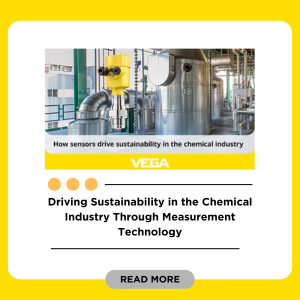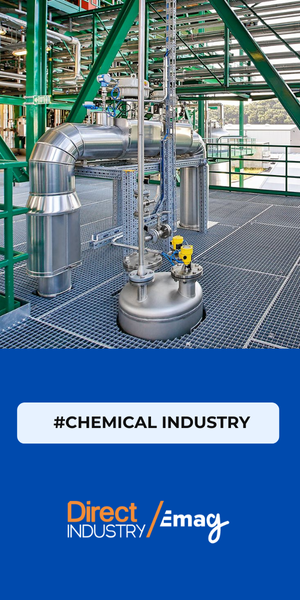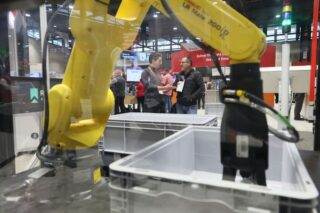From agentic AI to predictive analytics, today’s AI-powered solutions are revolutionizing the way businesses operate, compete, and grow.
Transformative Technology
Artificial intelligence (AI) refers to computer systems capable of performing tasks that once required human intelligence – such as visual perception, speech recognition, and decision-making. Encompassing technologies like machine learning, natural language processing, and robotics, the ability of sophisticated AI systems to analyze data, identify patterns, learn from experience, and make predictions is enabling businesses to operate in an ever faster and smarter way.
AI can also automate repetitive tasks, freeing up employees across industrial sectors to focus on more meaningful, added value work.
According to recent surveys, almost 90% of industrial leaders claim AI is now fundamental to their business strategy, or will be in the next two years. With companies increasingly investing in AI to keep pace with their competitors, the value of the global AI market is predicted to reach nearly 830 billion USD by 2030. And 2025 is already proving a pivotal year, as this transformative technology redefines how companies operate, compete, and innovate.
Here are five key AI trends shaping today’s industrial landscape.
1/ Agentic AI
Agentic AI refers to artificial intelligence systems that don’t just react or follow pre-defined rules. Acting with autonomy and adaptability, they are capable of independently making decisions and taking actions to fulfil objectives in dynamic business environments.
Agentic AI is vastly expanding the impact and value of automation for a whole array of enterprises and industrial sectors. Such automation, which is typically delivered via a combination of AI agents, other technological systems, and people, can deliver increased efficiency and productivity, enhance customer experience, and enable employees to switch their efforts toward creativity, problem-solving, and more nuanced decision making.
“In 2025, agentic AI is becoming more practical thanks to better planning, memory, and integration with business apps,” says Shaun Hughes, founder of leading UK-based business AI consultancy EfficiencyAI. “We are seeing growing usage in organizations to save time on repetitive, multi-stage tasks and automate entire workflows – not just isolated actions. This area is ripe for growth, with the latest generation of agents combining autonomy with real-world access.”
READ ALSO
2/ Predictive Analytics
Predictive analytics is an advanced form of data analytics that attempts to anticipate what might happen next. In industry, the growth of predictive and augmented analytics coincides with that of big data systems, with larger and more expansive pools of data seeing AI-powered data mining provide ever more accurate and valuable predictive insights. Developments in big data machine learning are helping enhance analytical capabilities.
While predictive AI is less headline-grabbing than its complementary sibling, generative AI, its vital role in achieving operational gains across industrial sectors continues to expand.
“Predictive AI technology isn’t new, but in 2025 it’s more accurate and accessible to non-experts,” says Shaun Hughes. “Businesses are using it to plan stock levels, predict customer churn, and anticipate equipment or supply chain failures. The benefit is that companies can act before problems arise and identify deeper patterns within their business sphere.”
3/ Multimodal AI
Multi-modal AI is a type of artificial intelligence that can understand and process different types of information, such as text, images, audio, and video – all at the same time. Aiming to mimic the way the human brain seamlessly integrates information from various senses, it is already making waves across multiple industries.
In the field of robotics, for example, robots equipped with computer vision and multi-modal AI can interpret human gestures and facial expressions, allowing them to interact more naturally with people.
“This year, multi-modal AI has become much more capable – as users can see in their day-to-day AI chats,” says Shaun Hughes. “For example, multi-modal AI systems can look at an image, understand what it shows, and write a caption or answer a question about it. In industry, they can enhance everything from visual inspections in manufacturing to content tagging and safety monitoring.”
READ ALSO
4/ AI Reasoning for Enterprise Data
Unlike generative AI, which focuses on pattern prediction and language fluency, reasoning AI emphasises logical thinking, goal-oriented problem-solving, and the ability to synthesize information across multiple steps and contexts. These systems aim to understand not just what to say next, but why – and how each answer fits into a broader sequence of reasoning.
As enterprise use cases grow more complex, the value of AI systems that can think through scenarios, evaluate alternatives, and justify decisions has become increasingly compelling.
“This is about giving AI access to a company’s internal data – such as reports, policies, and e-mails – and using it to answer questions, summarize, or spot contradictions,” says Shaun Hughes. “The integration of systems such as Microsoft’s Copilot into business is leading to faster decision-making and less time wasted searching for the right information.”
5/ AI-Powered Customer Service
AI in customer service refers to the use of intelligent technology to create support experiences that are fast, efficient, and personalized. AI-powered customer service tools enable companies to automate experiences, streamline workflows, and assist agents, saving both time and money and potentially boosting sales.
“Chatbots have been around for a while, but this year they’re more useful than ever,” says Shaun Hughes. “They can handle more complex queries, sound more natural, and remember previous interactions. Currently the main benefit for companies is 24/7 customer help at scale, but I predict this area is going to develop way beyond chatbots into full AI voice interaction.”
An Eye on the Future
The future of AI in industry is filled with possibilities. It undoubtedly involves enhanced, autonomous automation, advanced data analysis, personalized customer experiences, and improved operational efficiency and profitability.
“There are so many ways that AI will continue to revolutionize business,” says Shaun Hughes. “AI-assisted robotics in warehouse and logistics settings is something we’ve been looking into, for example. Moving beyond typical warehouse robots, the future will see robotic systems fused with AI – machines that can understand instructions and adapt in real time to different jobs. Cost may currently mean such systems are some way from becoming a reality, but we believe they have the potential to massively boost supply chain efficiencies.”






![Image [Best of 2025] How Generative AI Is Transforming Industry](/wp-content/uploads/sites/3/AI-4-320x213.jpg)
![Image [BUYING GUIDE] How to Choose the Right Industrial Robot?](/wp-content/uploads/sites/3/Industrial-Robot-320x213.jpg)

![Image [Buying Guide] How to Choose the Right Safety Shoes?](/wp-content/uploads/sites/3/Safety-Shoes-320x213.jpg)

